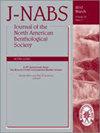Building freshwater macroinvertebrate DNA-barcode libraries from reference collection material: formalin preservation vs specimen age
引用次数: 36
Abstract
Abstract As part of its ongoing work in biomonitoring, Environment Canada's Canadian Aquatic Biomonitoring Network (CABIN) program has assembled an expert-verified reference collection of 3864 specimens of 604 species of Canadian freshwater macroinvertebrates. Such collections are a key resource for developing a deoxyribonucleic acid (DNA) barcode library to facilitate molecular identification of biomonitoring samples. We examined the problems encountered in using such legacy material to obtain reference barcodes. We focused on the influence of specimen age and preservation history. To supplement work on the reference collection, we determined the time-dependent effects of formalin preservation on DNA-barcode integrity in 4 common arthropod taxa by controlled exposure of fresh material obtained from laboratory cultures. Specimens in the reference collection were preserved with short-term fixation in formalin followed by prolonged preservation in 70% ethanol. Only 19 caddisfly larval specimens out of the total of 650 analyzed returned full-length sequences. In contrast, formalin preservation of freshly collected material for up to 20 d yielded good sequencing success and high-quality sequences. Freshly collected material clearly provides the best basis for the future development of DNA-barcode libraries, and formalin preservation should be avoided where possible to ensure that DNA integrity is maximized.从参考收集材料建立淡水大型无脊椎动物dna条形码文库:福尔马林保存与标本年龄
作为生物监测工作的一部分,加拿大环境部的加拿大水生生物监测网络(CABIN)项目收集了604种加拿大淡水大型无脊椎动物的3864个标本,经专家验证。这些集合是开发脱氧核糖核酸(DNA)条形码库的关键资源,以促进生物监测样品的分子鉴定。我们研究了在使用这些遗留材料获取参考条形码时遇到的问题。我们重点研究了标本年龄和保存历史的影响。为了补充参考资料收集工作,我们通过控制暴露实验室培养的新鲜材料,确定了福尔马林保存对4种常见节肢动物类群dna条形码完整性的时间依赖性影响。参考标本在福尔马林中短期固定,然后在70%乙醇中长期保存。在650个分析样本中,只有19个caddisfly幼虫样本返回了全长序列。相比之下,福尔马林保存新鲜收集的材料长达20天,获得了良好的测序成功和高质量的序列。新鲜采集的材料显然为DNA条形码文库的未来发展提供了最好的基础,应尽可能避免福尔马林保存,以确保DNA的完整性最大化。
本文章由计算机程序翻译,如有差异,请以英文原文为准。
求助全文
约1分钟内获得全文
求助全文

 求助内容:
求助内容: 应助结果提醒方式:
应助结果提醒方式:


